Wide-Angle Beam-Switching Antenna with Stable Gain Based on a Virtual Image Lens
Abstract
:1. Introduction
2. Materials and Methods
2.1. Virtual Image Lens
2.2. Integrated Lens Antenna
3. Results
4. Discussion
5. Conclusions
Author Contributions
Funding
Data Availability Statement
Acknowledgments
Conflicts of Interest
Abbreviations
| FR2 | Frequency Range 2 |
| QoS | Quality of Service |
| PPW | Parallel Plate Waveguide |
| PFD | Power Flux Density |
| FDM | Fused Deposition Modeling |
References
- Wang, Y.; Li, J.; Huang, L.; Jing, Y.; Georgakopoulos, A.; Demestichas, P. 5G Mobile: Spectrum Broadening to Higher-Frequency Bands to Support High Data Rates. IEEE Vehic. Tech. Mag. 2014, 9, 39–46. [Google Scholar] [CrossRef]
- Ericsson, A.B. 5G Wireless Access: An Overview. Available online: https://www.ericsson.com/en/reports-and-papers/white-papers/5g-wireless-access-an-overview (accessed on 26 February 2024).
- Cheng, Y.J.; Hong, W.; Wu, K.; Kuai, Z.Q.; Yu, C.; Chen, J.X.; Zhou, J.Y.; Tang, H.J. Substrate Integrated Waveguide (SIW) Rotman Lens and Its Ka-Band Multibeam Array Antenna Applications. IEEE Trans. Antennas Propag. 2008, 56, 2504–2513. [Google Scholar] [CrossRef]
- Ettorre, M.; Sauleau, R.; Le Coq, L. Multi-Beam Multi-Layer Leaky-Wave SIW Pillbox Antenna for Millimeter-Wave Applications. IEEE Trans. Antennas Propag. 2011, 59, 1093–1100. [Google Scholar] [CrossRef]
- Ettorre, M.; Manzillo, F.F.; Casaletti, M.; Sauleau, R.; Le Coq, L.; Capet, N. Continuous Transverse Stub Array for Ka-Band Applications. IEEE Trans. Antennas Propag. 2015, 63, 4792–4800. [Google Scholar] [CrossRef]
- Barba Molina, H.; Gonzalez Marin, J.; Hesselbarth, J. Modified planar Luneburg lens millimetre-wave antenna for wide-angle beam scan having feed locations on a straight line. IET Microw. Antennas Propag. 2017, 11, 1462–1468. [Google Scholar] [CrossRef]
- Ströber, T.; Tubau, S.; Girard, E.; Legay, H.; Goussetis, G.; Ettorre, M. Shaped Parallel-Plate Lens for Mechanical Wide-Angle Beam Steering. IEEE Trans. Antennas Propag. 2021, 69, 8158–8169. [Google Scholar] [CrossRef]
- Del Mastro, M.; Mahmoud, A.; Potelon, T.; Sauleau, R.; Quagliaro, G.; Grbic, A.; Ettorre, M. Ultra-Low-Profile Continuous Transverse Stub Array for SatCom Applications. IEEE Trans. Antennas Propag. 2022, 70, 4459–4471. [Google Scholar] [CrossRef]
- Pfeiffer, C.; Grbic, A. A Printed, Broadband Luneburg Lens Antenna. IEEE Trans. Antennas Propag. 2010, 58, 3055–3059. [Google Scholar] [CrossRef]
- Bosiljevac, M.; Casaletti, M.; Caminita, F.; Sipus, Z.; Maci, S. Non-Uniform Metasurface Luneburg Lens Antenna Design. IEEE Trans. Antennas Propag. 2012, 60, 4065–4073. [Google Scholar] [CrossRef]
- Dhouibi, A.; Burokur, S.N.; de Lustrac, A.; Priou, A. Compact Metamaterial-Based Substrate-Integrated Luneburg Lens Antenna. IEEE Antennas Wirel. Propag. Lett. 2012, 11, 1504–1507. [Google Scholar] [CrossRef]
- Lu, H.; Liu, Z.; Liu, Y.; Ni, H.; Lv, X. Compact Air-Filled Luneburg Lens Antennas Based on Almost-Parallel Plate Waveguide Loaded With Equal-Sized Metallic Posts. IEEE Trans. Antennas Propag. 2019, 67, 6829–6838. [Google Scholar] [CrossRef]
- Fan, F.; Cai, M.; Zhang, J.; Yan, Z.; Wu, J. Wideband Low-Profile Luneburg Lens Based on a Glide-Symmetric Metasurface. IEEE Access 2020, 8, 85698–85705. [Google Scholar] [CrossRef]
- Lian, J.W.; Ansari, M.; Hu, P.; Guo, Y.J.; Ding, D. Wideband and High-Efficiency Parallel-Plate Luneburg Lens Employing All-Metal Metamaterial for Multibeam Antenna Applications. IEEE Trans. Antennas Propag. 2023, 71, 3193–3203. [Google Scholar] [CrossRef]
- Ettorre, M.; Sauleau, R. Reconfigurable multi-beam pillbox antenna for millimeter wave automotive radars. In Proceedings of the 9th International Conference on Intelligent Transport Systems Telecommunications, (ITST), Lille, France, 20–22 October 2009; pp. 87–90. [Google Scholar]
- White, W. Pattern limitations in multiple-beam antennas. IRE Trans. Antennas Propag. 1962, 10, 430–436. [Google Scholar] [CrossRef]
- Stein, S. On cross coupling in multiple-beam antennas. IRE Trans. Antennas Propag. 1962, 10, 548–557. [Google Scholar] [CrossRef]
- Tekkouk, K.; Ettorre, M.; Gandini, E.; Sauleau, R. Multibeam pillbox antenna with low sidelobe level and high-beam crossover in SIW technology using the split aperture decoupling method. IEEE Trans. Antennas Propag. 2015, 63, 5209–5215. [Google Scholar] [CrossRef]
- Foglia Manzillo, F.; Śmierzchalski, M.; Le Coq, L.; Ettorre, M.; Aurinsalo, J.; Kautio, K.T.; Lahti, M.S.; Lamminen, A.E.I.; Säily, J.; Sauleau, R. A Wide-Angle Scanning Switched-Beam Antenna System in LTCC Technology With High Beam Crossing Levels for V-Band Communications. IEEE Trans. Antennas Propag. 2019, 67, 541–553. [Google Scholar] [CrossRef]
- Zetterstrom, O.; Arnberg, P.; Vidarsson, F.V.; Algaba-Brazález, A.; Manholm, L.; Johansson, M.; Quevedo-Teruel, O. V-Band Geodesic Generalized Luneburg Lens Antenna with High Beam Crossover Gain. IEEE Trans. Antennas Propag. 2023, 71, 7591–7596. [Google Scholar] [CrossRef]
- Chou, H.T.; Chang, Y.S.; Huang, H.J.; Yan, Z.D.; Lertwiriyaprapa, T.; Torrungrueng, D. Two-Dimensional Multi-Ring Dielectric Lens Antenna to Radiate Fan-Shaped Multi-Beams With Optimum Adjacent-Beam Overlapping Crossover by Genetic Algorithm. IEEE Access 2020, 8, 79124–79133. [Google Scholar] [CrossRef]
- Orgeira, O.; León, G.; Fonseca, N.J.G.; Mongelos, P.; Quevedo-Teruel, O. Near-Field Focusing Multibeam Geodesic Lens Antenna for Stable Aggregate Gain in Far-Field. IEEE Trans. Antennas Propag. 2022, 70, 3320–3328. [Google Scholar] [CrossRef]
- Luneburg, R.K. Mathematical Theory of Optics; Brown University Press: Providence, RI, USA, 1944. [Google Scholar]
- Fonseca, N.J.G.; Tyc, T.; Quevedo–Teruel, O. A solution to the complement of the generalized Luneburg lens problem. Commun. Phys. 2021, 4, 270. [Google Scholar] [CrossRef]
- Ericsson, A.B. Leveraging the Potential of 5G Millimeter Wave. Available online: https://www.ericsson.com/en/reports-and-papers/further-insights/leveraging-the-potential-of-5g-millimeter-wave (accessed on 1 September 2023).
- Tyc, T.; Herzánová, L.; Šarbort, M.; Bering, K. Absolute instruments and perfect imaging in geometrical optics. New J. Phys. 2011, 13, 115004. [Google Scholar]
- Poyanco, J.M.; Zetterstrom, O.; Castillo-Tapia, P.; Fonseca, N.J.G.; Pizarro, F.; Quevedo-Teruel, O. Two-Dimensional Glide-Symmetric Dielectric Structures for Planar Graded-Index Lens Antennas. IEEE Antennas Wirel. Propag. Lett. 2021, 20, 2171–2175. [Google Scholar] [CrossRef]
- CST Microwave Studio, Version 2022. Available online: https://www.3ds.com/products-services/simulia/products/cst-studio-suite/ (accessed on 18 August 2023).

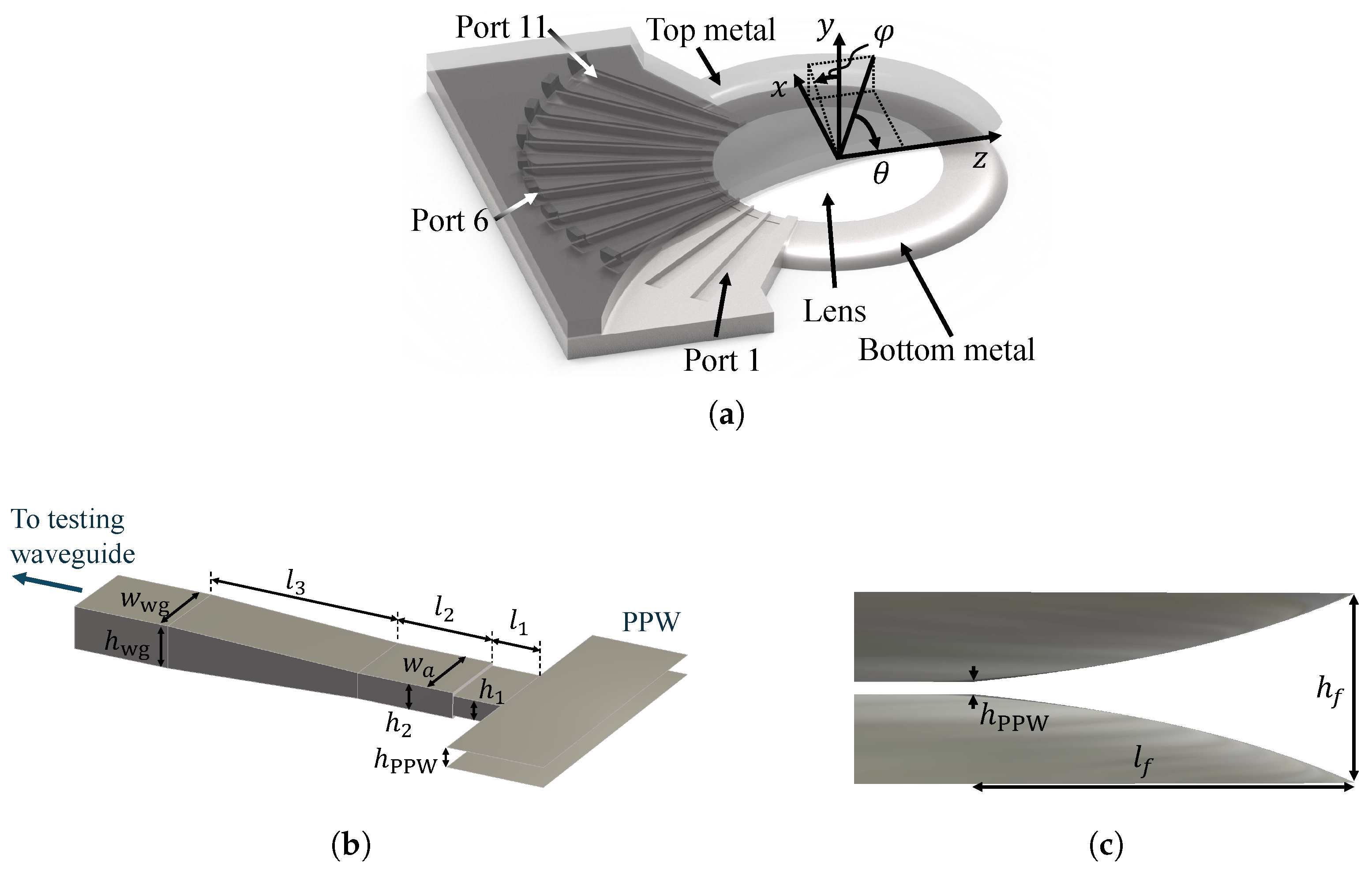
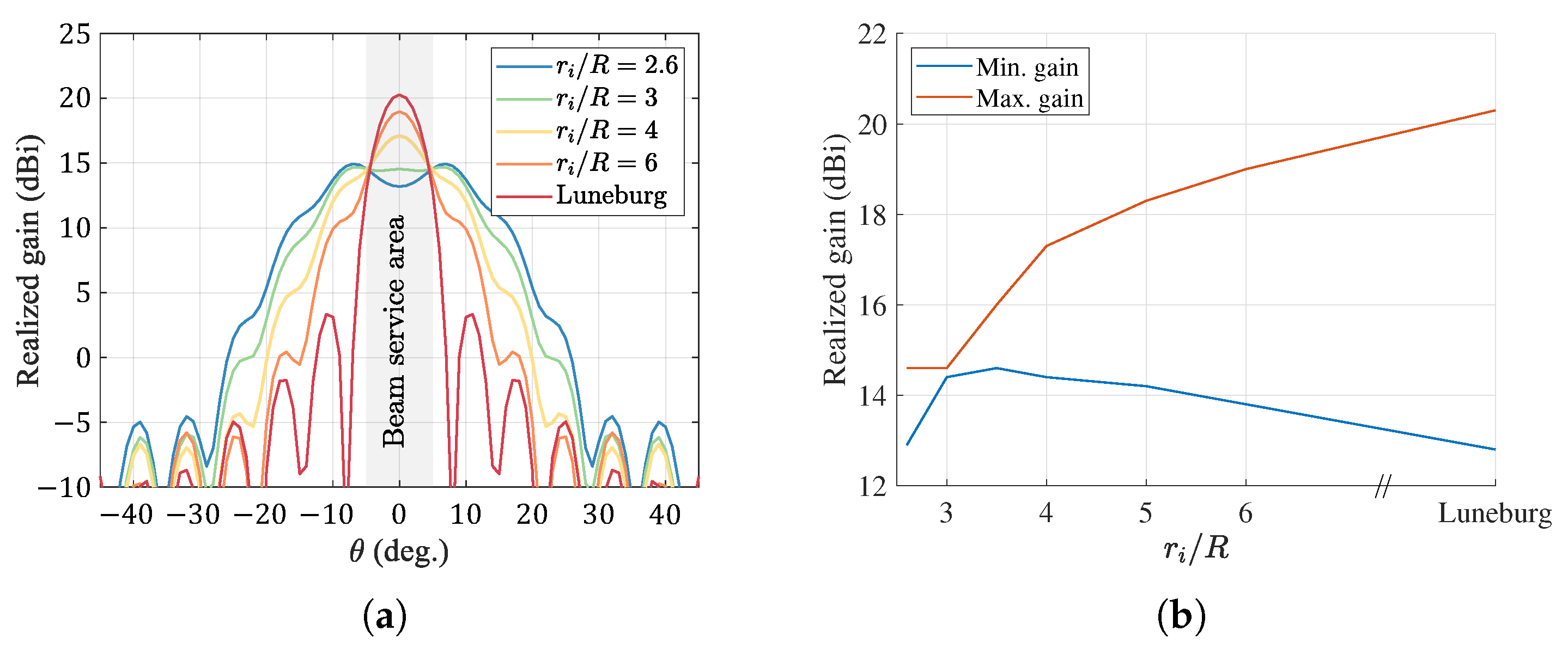
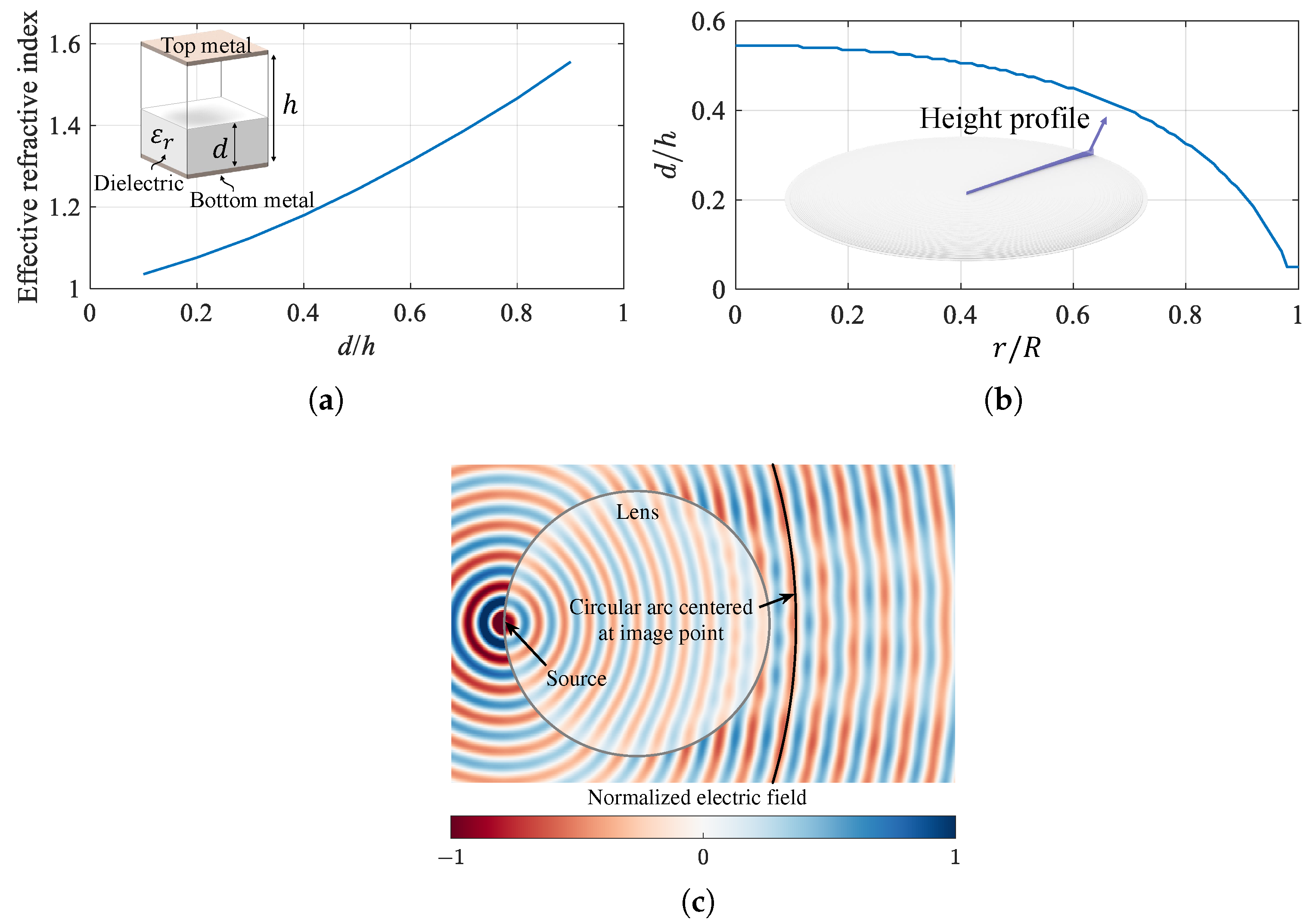
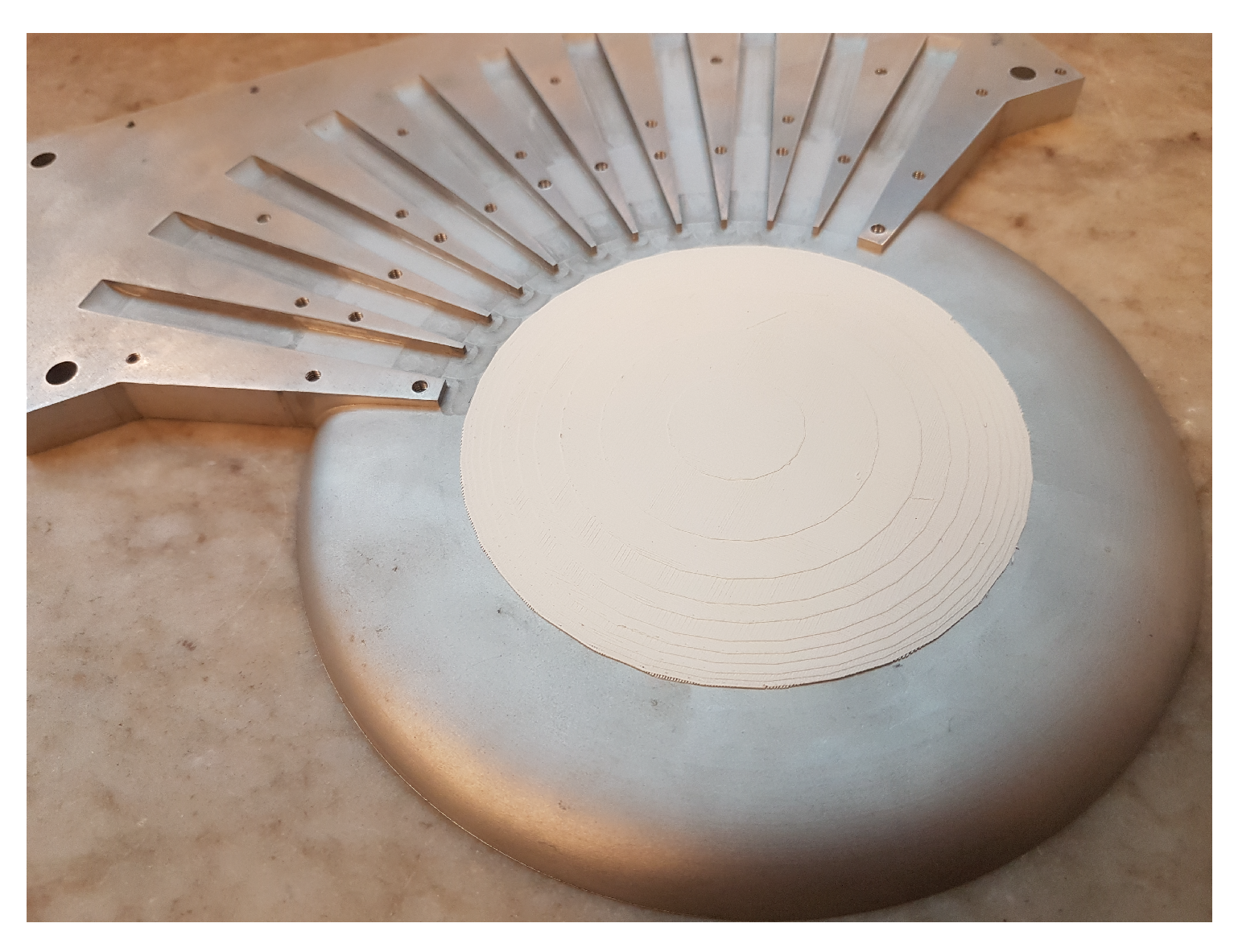
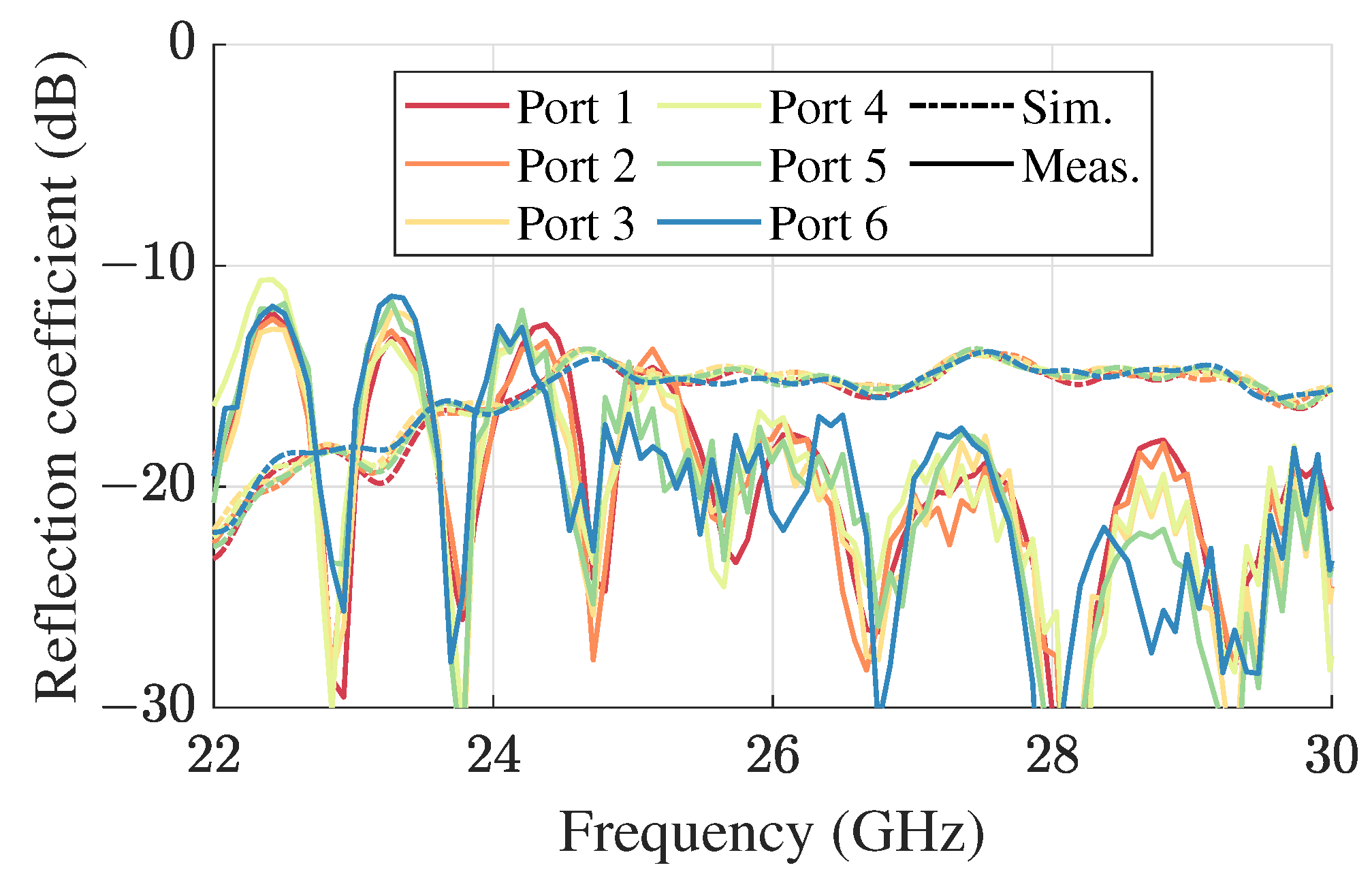
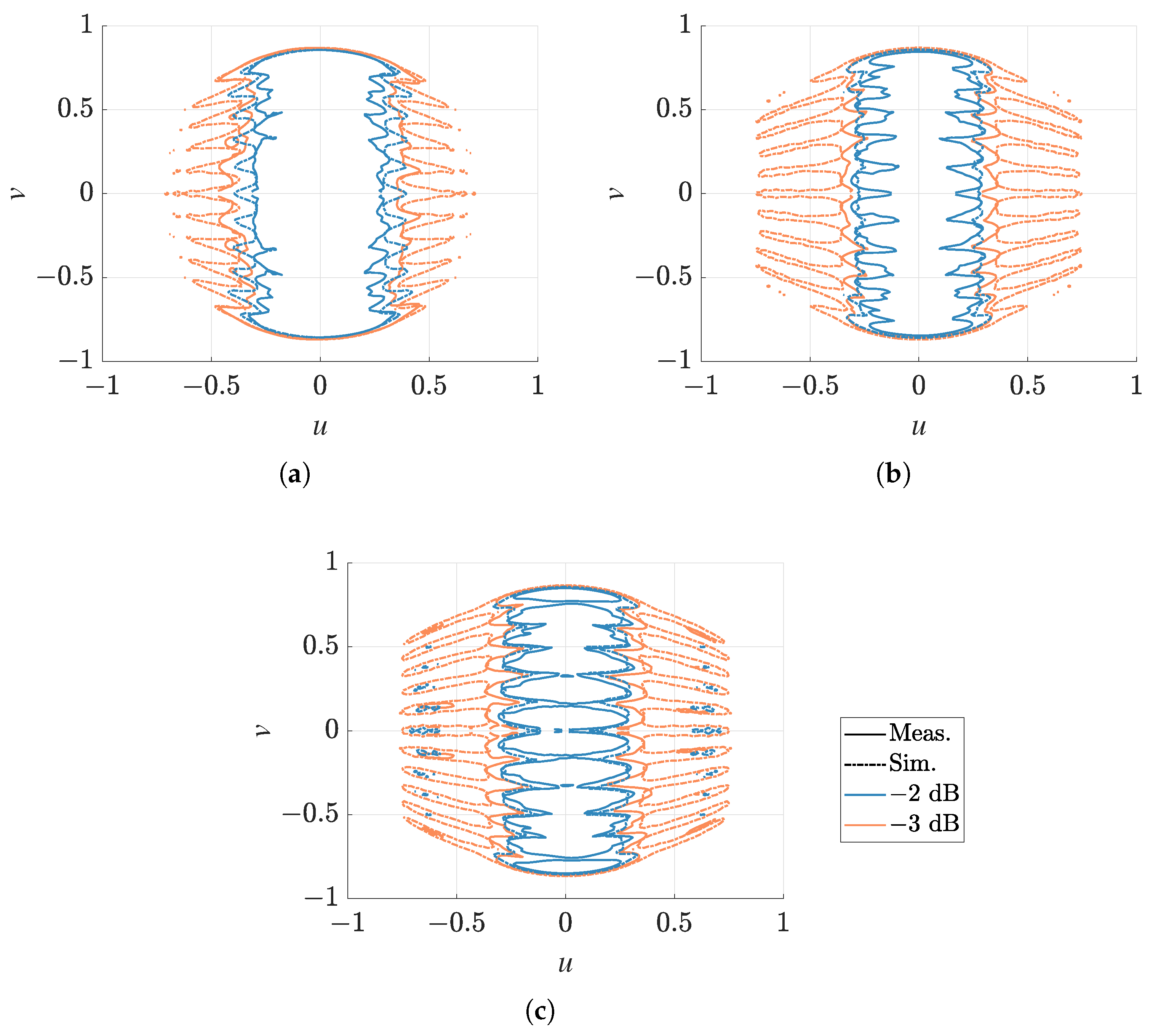
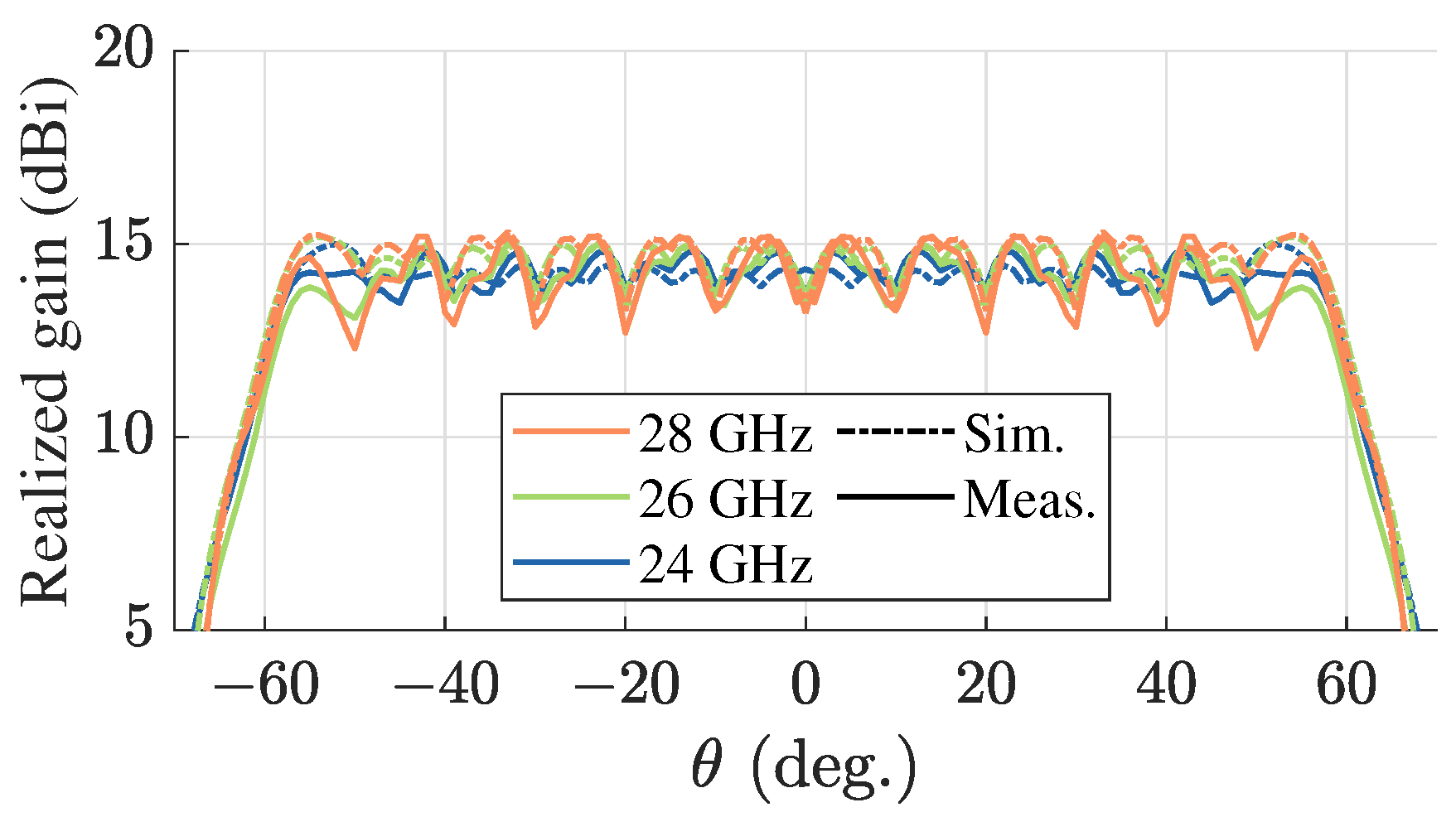
| Reference | Frequency | Refractive Index | Smallest/Largest Gain Variation * |
|---|---|---|---|
| [20] | 57–67 GHz | 1–1.26 | dB/4 dB |
| [21] | 38 GHz | 1–1.35 | 1 dB † |
| [22] | 30–35 GHz | 1–1.6 § | 1 dB/3 dB |
| This work | 24–28 GHz | 1–1.27 | 1 dB/2 dB |
Disclaimer/Publisher’s Note: The statements, opinions and data contained in all publications are solely those of the individual author(s) and contributor(s) and not of MDPI and/or the editor(s). MDPI and/or the editor(s) disclaim responsibility for any injury to people or property resulting from any ideas, methods, instructions or products referred to in the content. |
© 2024 by the authors. Licensee MDPI, Basel, Switzerland. This article is an open access article distributed under the terms and conditions of the Creative Commons Attribution (CC BY) license (https://creativecommons.org/licenses/by/4.0/).
Share and Cite
Zetterstrom, O.; Fonseca, N.J.G.; Quevedo-Teruel, O. Wide-Angle Beam-Switching Antenna with Stable Gain Based on a Virtual Image Lens. Electronics 2024, 13, 1034. https://doi.org/10.3390/electronics13061034
Zetterstrom O, Fonseca NJG, Quevedo-Teruel O. Wide-Angle Beam-Switching Antenna with Stable Gain Based on a Virtual Image Lens. Electronics. 2024; 13(6):1034. https://doi.org/10.3390/electronics13061034
Chicago/Turabian StyleZetterstrom, Oskar, Nelson J. G. Fonseca, and Oscar Quevedo-Teruel. 2024. "Wide-Angle Beam-Switching Antenna with Stable Gain Based on a Virtual Image Lens" Electronics 13, no. 6: 1034. https://doi.org/10.3390/electronics13061034





